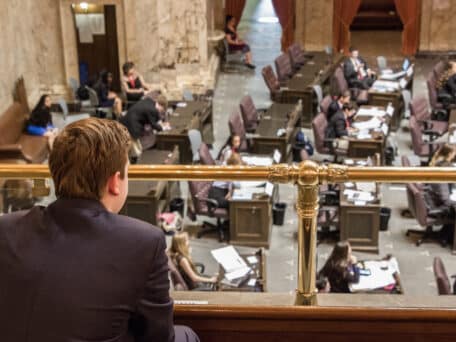A couple of “green” activists wrote an op-ed in the Seattle Times that actually praised Jay Inslee for his “leadership” in directing the Department of Ecology to create a so-called Clean Air Rule. The article is littered with liberals’ favorite “green” buzzwords and typically flawed reasoning, but its intent is clear: prepare the public for round two of the battle over Inslee’s desire to jam through by regulation what he cannot get through his own party in the legislature.
The greenies are on shaky ground in pushing Inslee’s heavy-handed approach. His “experts” at Ecology were already forced to scrap the first version of the rule due to all its flaws, which the activists’ gloss over by saying the second version will be released in the “coming months.” They urge readers to “watch closely for important improvements from the draft released earlier this year to see if it represents real leadership on climate and clean energy.”
Supposedly, we are to believe that the second draft “represents real leadership on climate and clean energy” if it:
- Includes a cap on “total pollution emitted by top emitters.” Preferably, “modeled on similar successful programs in other places, like California.”
- Does not “inadvertently create incentives for business to move jobs and emissions to other parts of the world.”
- Allows for offsets — a.k.a. “credits companies can purchase for carbon reductions performed by others, in lieu of direct and measured reductions at polluting facilities, the new proposal should minimize loopholes and double-counting that give twice the credit for half the benefit.”
There is a significant problem that the authors do not consider — a problem that, essentially, wipes out the three criteria of “real leadership” listed.
Carbon rules like the ones Inslee is so enamored with carry the obvious consequence of companies simply leaving the state and doing business elsewhere due to increased costs. Yet, that’s one of the results the authors claim they want to avoid. Tellingly, they point to California as an example.
However, for any of the three points to be possible (even then it is a stretch), Washington would have to link any future scheme with the cap-and-trade systems in California and Northeast states, known as the Regional Greenhouse Gas Initiative (RGGI). As Shift reported, that is not going to happen.
The reality is that California and RGGI states have no incentive to link their systems to Washington State. In fact, they have an incentive not to participate. Linking to Washington reduces emission caps for the respective programs. That risks taking credits away from companies in California and the Northeast, resulting in a supply shortage. The costs of compliance would increase as a result.
On the other hand, in Washington State, any carbon rule scheme that does not connect to the California or RGGI markets would result in very high costs for manufacturers to meet the carbon reduction targets
As apparently we will soon discover, Ecology’s second draft will not meet the authors’ three criteria because it will fail to link with California and RGGI states. Unfortunately, that won’t stop Inslee from attempting to impose the rule by executive order… or extreme greenies like the authors from praising and advocating the scheme.




